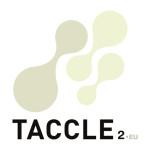Ease: ***
Overview
Understanding how the world and everything in it changes over time is essential in order to understanding the concept of a day, week, season, year and the general concept of ‘time’. The children will have the opportunity to analyse how an object changes over time, be it a plant growing, shadows changing throughout the day or as in this case, an apple decaying.
Description:
Albert Einstein said “Time is an Illusion”. Discuss this with learners and explain to them that we are going to try and ‘capture’ time at work. Explain that they will take one picture a day of a single apple over a period of time. A month is usually enough to provide a good example but 3 months is even better. Place the fresh apple on a plate and leave somewhere it will not get disturbed. It is best left out in a light position. Spraying with water every few days can help the process along! Place the camera on a tripod and, if possible, leave in situ for the duration. If this isn’t practical, place markers on the table so that you can re-position the camera correctly after it has been removed. The set should remain as undisturbed as possible. Of course, pupils will observe the apple throughout the process, but this will not detract from their amazement when they watch the final sequence.
When they’ve collected as many pictures as they deem necessary (1-3 months), ask them to download the images to a computer and to upload them to digital editing software such as Windows Movie Maker. They’ll place the pictures in sequence on the board and play, ensuring slide transitions aren’t too jerky (Fade usually works the best). They’ll need to publish their completed movie to the computer before they are able to speed up the video (recommended). After they’ve published it, ask them to open the video and click the tab under Now Playing, select Enhancements, then Play Speed Settings and scroll the speed bar up from 1.0 to 2.0. They are now ready to play their Time Video… but be prepared for very loud exclamations of repulsion!
Learners usually want to ‘share’ their video with others. Allow them to upload the video to the school website or to You Tube or allow them to copy the video, take it home, and share it on their personal website or Facebook page.
Afterward, ask them “Is time an illusion?” but be warned, the discussion is very lively!
What do I need?
Photo cameras with a tripod, a PC, video assembly programme (we used Windows Movie Maker) and a nice juicy apple! You could use other software: Keynote, Power Point (use autochange on fast speed on slideshow) Photoshop, Final Cut, iMovie, Premiere, Gimp, PICASA (check this out)
Added value:
Prior to computers, we depended on flick books to create this effect. Thankfully, now we don’t have to!
Hints and tips:
If you’re taking photos over a long period, let’s say the full 3months, it isn’t necessary to use every single photo. Concise clips can be created by choosing photos that exhibit a significant change or development.
There is more complete guidance on using this software available in the unit You’ve Been Framed.
Safety:
There are no safety issues relating to this software.
Other opportunities to use the same software:
- Allow learners to choose their own objects to record over time. Discuss how organic material changes faster and most radically, whereas inorganic matter can remain unchanged for months, years, decades… even thousands of years.
- Create a mini landfill site in class by placing soil and a collection of organic and inorganic objects together in a transparent plastic box. Record how these change (or remain unchanged) over time. Use it to create a video highlighting their findings regarding disposing of rubbish
This post is also available in: Dutch, Italian, Portuguese (Portugal), Romanian, Welsh





 English
English Nederlands
Nederlands Deutsch
Deutsch Italiano
Italiano Español
Español Português
Português Română
Română Cymraeg
Cymraeg
I worked as external trainer in primary and secondary school of Marche Region (Italy).
This post is well treated and this case of study represents an interesting and usefull activity that could allow to understand the concept of “time” and the changing that this produces.
I appreciate, also, the indications and the suggestions to use electronic tools (Photo cameras with a tripod, a PC, etc) in order to understand the phenomena.
A.G.
This educational experience may relate primarily to the matter of philosophy, it makes students aware of the concept of time. The interesting thing is that it does so through the use of ICT, in this case a camera, a tool that everyone has access today. And also use a presentation program that makes it more enjoyable and visually more attractive to children. Also at the age of 9 and 12 years, children are beginning to think in more abstract things and time is something we first reflect. The development of this task will also be useful in the future it will already be familiar with these tools of ICT.